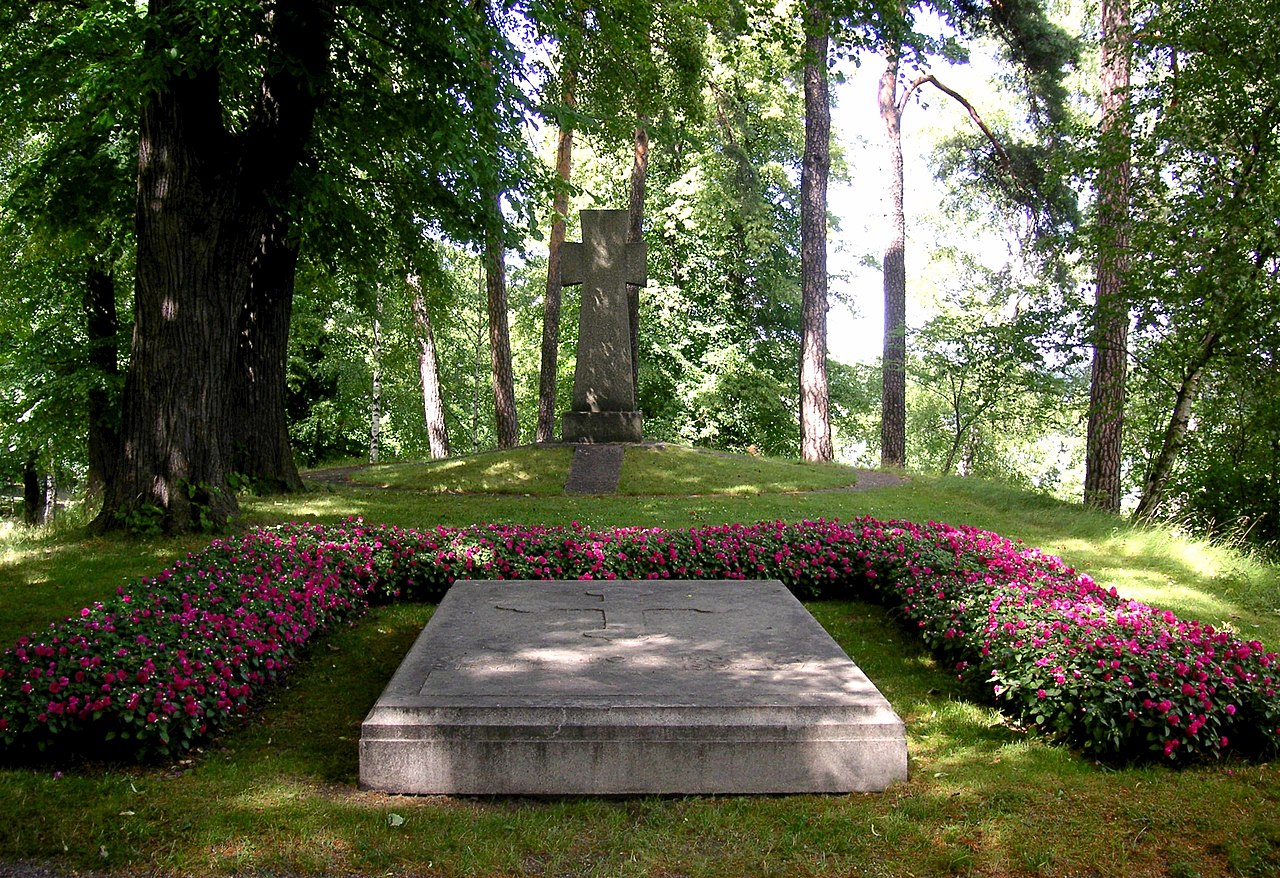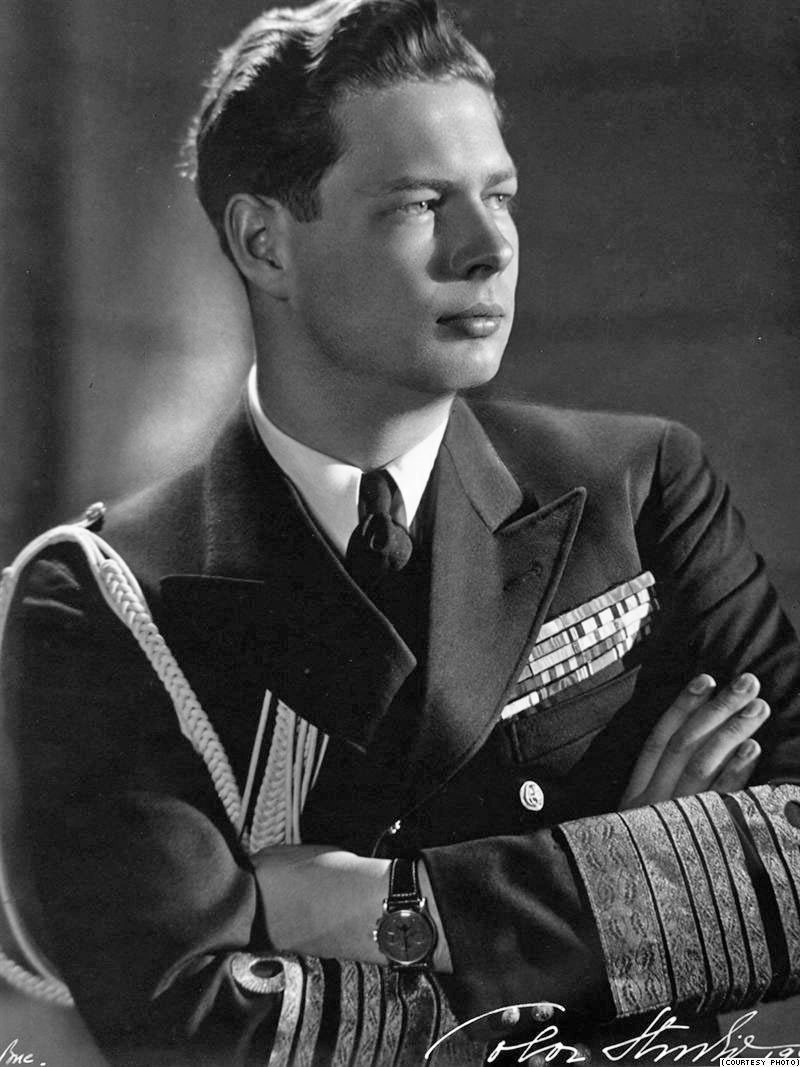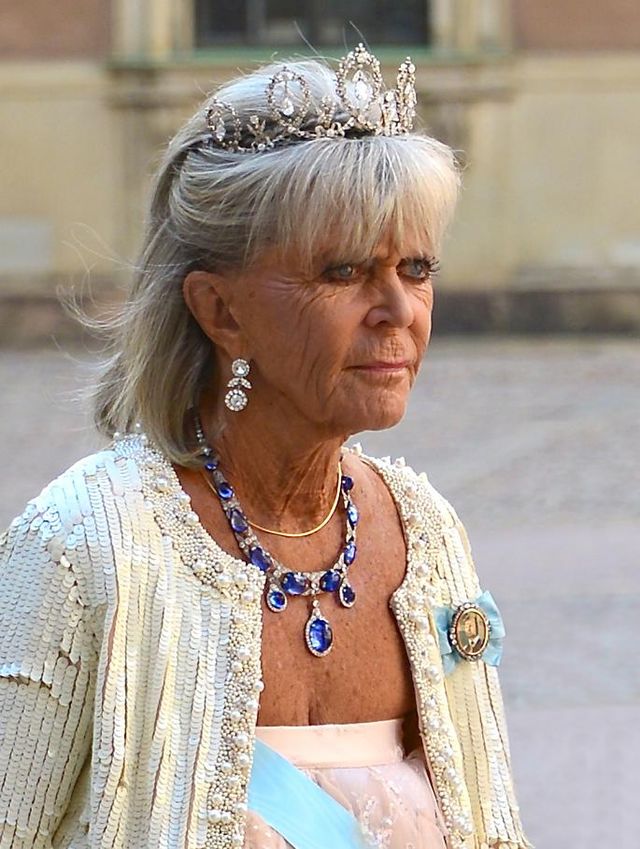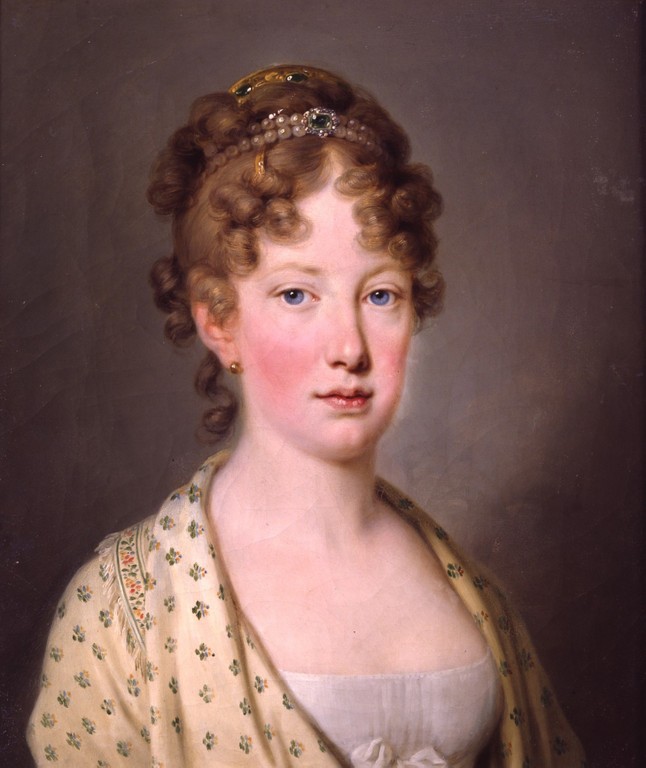© Unofficial Royalty 2024
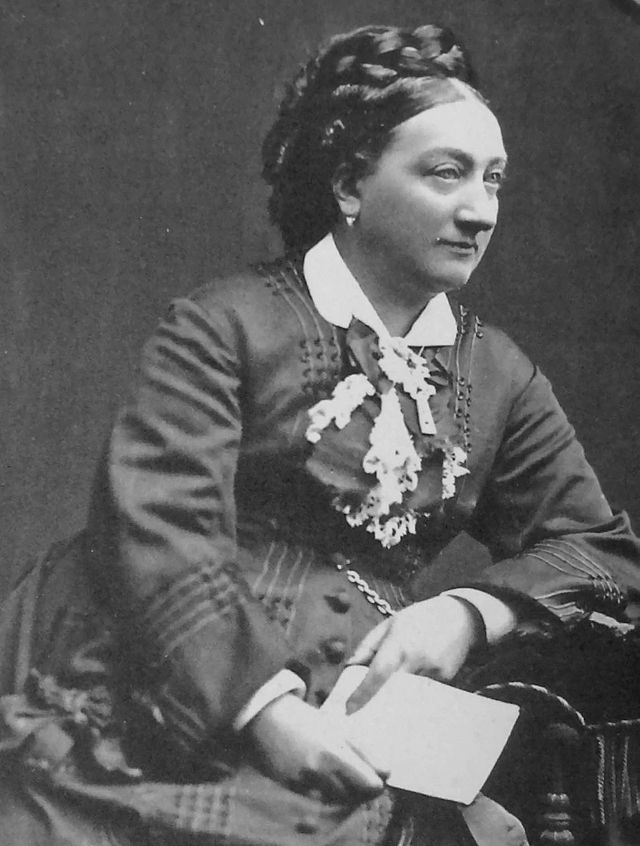
Alexandrine of Baden, Duchess of Saxe-Coburg and Gotha; Credit – Wikipedia
December 6, 1421 – Birth of King Henry VI of England at Windsor Castle in Windsor, England
King Henry VI, from the House of Lancaster, is the youngest-ever English monarch. He is also on the top ten list of longest-reigning British monarchs, coming in at number seven. Henry VI’s father King Henry V, a warrior king, succumbed to dysentery, a disease that killed more soldiers than battle, leaving a nine-month-old son to inherit his throne. In 1445, Henry VI married Margaret of Anjou, the niece of King Charles VII of France. The couple had one son Edward of Westminster, Prince of Wales who was killed at the Battle of Tewkesbury during the Wars of the Roses. Even before the birth of Henry’s son, factions were forming and the seeds of the Wars of the Roses were being planted. Henry’s wife Margaret Margaret believed her husband was threatened with being deposed by Richard Plantagenet, 3rd Duke of York who thought he had a better claim to the throne and would be a better king than Henry. Eventually, things came to a head between the Lancastrians and the Yorkists, and war broke out. The Wars of the Roses did not end well for Henry VI. The final decisive Yorkist victory was at the Battle of Tewkesbury on May 4, 1471, where Henry’s son Edward was killed. Henry VI was sent to the Tower of London and died on May 21, 1471, probably murdered on orders from the Yorkist King Edward IV.
Unofficial Royalty: King Henry VI of England
December 6, 1685 – Birth of Marie Adélaïde of Savoy, Duchess of Burgundy, wife of Louis, Duke of Burgundy, Le Petite Dauphin at the Royal Palace of Turin, in the Duchy of Savoy, now in Italy
Marie Adélaïde of Savoy was the wife of Louis, Duke of Burgundy, Le Petite Dauphin, and the mother of Louis XV, King of France. King Louis XIV outlived both his son Louis, Duke of Burgundy, Le Grand Dauphin and his grandson Louis, Duke of Burgundy, Le Petite Dauphin, and was succeeded by his five-year-old great-grandson King Louis XV when he died in 1715. On February 12, 1712, at the Palace of Versailles, 26-year-old Marie Adélaïde died from measles. Her husband Louis dearly loved his wife and stayed by her side throughout her illness. He caught the disease and died six days after her death, on February 18, 1712, aged 29.
Unofficial Royalty: Marie Adélaïde of Savoy, Duchess of Burgundy
December 6, 1686 – Death of Eleonora Gonzaga of Mantua, the third of the three wives of Ferdinand III, Holy Roman Emperor, in Vienna, Archduchy of Austria, now the capital of Austria, at the age of fifty-six; buried in the Imperial Crypt at the Capuchin Church in Vienna
Archduchess Maria Leopoldine of Austria, the second wife and first cousin of Ferdinand III, Holy Roman Emperor, died in childbirth in 1649. Ferdinand III’s stepmother, the Dowager Holy Roman Empress, also named Eleonora Gonzaga, was the second wife of his father Ferdinand II and Eleonora’s great aunt. It was Dowager Holy Roman Empress Eleonora who arranged the marriage between her stepson Ferdinand III and grand niece and goddaughter Eleonora. Twenty-year-old Eleonora and forty-two-year-old Ferdinand III, Holy Roman Emperor were married in 1651 and had four children but only two daughters survived childhood. After the death of her husband, Eleonora did all she could to ensure that her seventeen-year-old surviving stepson would be elected Leopold I, Holy Roman Emperor. Eleonora was highly respected by Leopold who consulted with her on many political and personal issues. Eleonora survived her husband by twenty-nine years, dying on December 6, 1686, in Vienna, Austria, at the age of fifty-six.
Unofficial Royalty: Eleonora Gonzaga of Mantua, Holy Roman Empress, 3rd wife of Ferdinand III, Holy Roman Emperor
December 6, 1734 – Death of Abigail Masham, Baroness Masham, favorite of Queen Anne of Great Britain, at Oates Hall, her husband’s family home, in High Laver, Essex, England; buried in the churchyard of All Saint Church in High Laver
Abigail Masham, Baroness Masham was the first cousin of Sarah Churchill, Duchess of Marlborough, born Sarah Jennings, and replaced Sarah as the favorite of Queen Anne of Great Britain. She remained Queen Anne’s favorite until Anne died in 1714. Abigail faithfully attended Anne during the last days of her life. However, upon Queen Anne’s death and the accession of the first Hanoverian monarch King George I, Abigail and her husband Samuel Masham, 1st Baron Masham were quickly evicted from their apartments in the various royal palaces. Even though Abigail and Samuel lost some income due to losing court positions, they were by no means poor. Just two weeks before Queen Anne’s death, Samuel had purchased a manor house three miles from Windsor, England where he retired with Abigail. Twenty years after Queen Anne’s death, 64-year-old Abigail died after a long illness.
Unofficial Royalty: Abigail Masham, Baroness Masham
December 6, 1792 – Birth of King Willem II of the Netherlands at Noordeinde Palace in The Hague, Dutch Republic, now in the Netherlands
Full name: Willem Frederik George Lodewijk
When he was two years old, Willem’s family was forced into exile when the French invaded and occupied the Dutch Republic during the Napoleonic Wars. Willem spent his childhood at the Prussian court where he received military training, and served in the Prussian Army. He attended Oxford University in England. In 1811, he entered the British Army and was an aide-de-camp to Arthur Wellesley, 1st Duke of Wellington. Willem’s family returned to the Netherlands in 1813 after the French retreated. In 1816, Willem married Grand Duchess Anna Pavlovna of Russia and the couple had five children. Willem came to the Dutch throne in 1840 when his father King Willem I abdicated due to constitutional changes he disagreed with, anger over the loss of Belgium, and his desire to make a morganatic second marriage with Henriëtte d’Oultremont after the death of his wife. During Willem II’s reign, the power of many monarchs diminished. The revolutions of 1848 and 1849, in which Louis-Philippe of France was deposed and other European monarchs were forced by violence to make concessions, made him fear for his throne. Willem decided to institute a more liberal government, believing it was better to grant reforms instead of having them imposed on him on less favorable terms later.
Unofficial Royalty: King Willem II of the Netherlands
December 6, 1792 – Birth of Maria Beatrice of Savoy, Duchess of Modena and Reggio, wife of Francesco IV, Duke of Modena and Reggio, in Turin, Kingdom of Sardinia, now in Italy
Full name: Maria Beatrice Vittoria Giuseppina
Maria Beatrice was the eldest of the seven children of Vittorio Emanuele I, King of Sardinia and Duke of Savoy. In 1812, 20-year-old Maria Beatrice married her 33-year-old maternal uncle Francesco IV, Duke of Modena and Reggio, and had four children. Like Maria Beatrice’s family, her husband Francesco had also been exiled since 1796 from the Duchy of Modena and Reggio due to the occupation of Napoleon’s French forces. After the fall of Napoleon in 1814, the couple was able to return and made their solemn entry into Modena on July 14, 1814. As the senior surviving descendant of Henrietta of England, Duchess of Orléans, daughter of King Charles I of England and sister of James II, King of England/James VII, King of Scots, Maria Beatrice became the Jacobite pretender to the thrones of England and Scotland after the death of her father Vittorio Emanuele I, King of Sardinia in 1824.
Unofficial Royalty: Maria Beatrice of Savoy, Duchess of Modena
Unofficial Royalty: The Jacobite Succession – Pretenders to the British Throne
December 6, 1820 – Birth of Alexandrine of Baden, Duchess of Saxe-Coburg and Gotha, wife of Ernst II, Duke of Saxe-Coburg and Gotha, in Karlsruhe, Grand Duchy of Baden, now in Baden-Württemberg, Germany
Full name: Alexandrine Luise Amalie Friederike Elisabeth Sophie
Alexandrine was the eldest of the eight children of Leopold I, Grand Duke of Baden and Princess Sophie of Sweden. In 1842, she married the future Ernst II, Duke of Saxe-Coburg and Gotha, the elder brother of Queen Victoria’s husband Prince Albert. Before the marriage, Ernst was suffering from a venereal disease as a result of his many affairs. He had been warned that continued promiscuity could leave him unable to father children. Ernst had at least three illegitimate children, but his marriage was childless, perhaps due to Ernst passing the venereal disease to Alexandrine causing her to become infertile. Alexandrine was loyal and devoted to her husband despite his infidelities and believed their lack of children was her fault. In 1844, Ernst’s father died and he became Duke of Saxe-Coburg and Gotha. Ernst was not well-loved by his people, but Alexandrine was. She supported many charities including the Ernst Foundation for needy students.
Unofficial Royalty: Alexandrine of Baden, Duchess of Saxe-Coburg and Gotha
December 6, 1892 – Birth of George Mountbatten, 2nd Marquess of Milford Haven, son of Prince Ludwig (Louis) of Battenberg (later 1st Marquess of Milford Haven) and Princess Victoria of Hesse and by Rhine, at the Neues Palais in Darmstadt, Grand Duchy of Hesse and by Rhine, now in Hesse, Germany
Birth name: Prince George Louis Victor Henry Serge of Battenberg
Like his father, George had a career in the Royal Navy. In 1916, he married Countess Nadejda Mikhailovna de Torby, daughter of Grand Duke Mikhail Mikhailovich of Russia and Countess Sophie von Merenberg. The couple had two children. George was instrumental in the upbringing of his nephew Prince Philip, Duke of Edinburgh after Philip’s mother suffered a breakdown and his father was more or less separated from the family. George became Philip’s primary guardian, serving as a surrogate father and arranging for, and financing, Philip’s education. George died from bone marrow cancer at the age of 45.
Unofficial Royalty: George Mountbatten, 2nd Marquess of Milford Haven
December 6, 1971 – Death of Mathilde Feliksovna Kschessinskaya, prima ballerina assoluta, mistress of Nicholas II, Emperor of All Russia before his marriage, mistress of Grand Duke Sergei Mikhailovich of Russia, and mistress and wife of Grand Duke Andrei Vladimirovich of Russia, in Paris, France; buried at the Sainte-Geneviève-des-Bois Russian Cemetery in Paris, France
Mathilde Feliksovna Kschessinskaya was one of the most famous ballerinas of the Maryinsky Ballet (now the Kirov Ballet) in St. Petersburg, Russia. She was awarded the title prima ballerina assoluta, traditionally reserved only for the most exceptional ballerinas of their generation. Mathilde, who was ambitious, used her connections to the Romanovs to promote her career. Mathilde and Grand Duke Andrei Vladimirovich escaped from Russia after the Russian Revolution and married in 1921. Mathilde had previously had one son whose father was either Grand Duke Andrei Vladimirovich’s or Grand Duke Sergei Mikhailovich’s. In 1926, Grand Duke Kirill Vladimirovich, Head of the Romanov Family, gave Mathilde and her son Vladimir the title and surname of the Prince/Princess of Krasinsky. In 1935, Grand Duke Kirill Vladimirovich gave Mathilde and her son the surname Romanovsky-Krasinsky, and so they were formally styled Princess Maria Romanovsky-Krasinsky and Prince Vladimir Andreievich Romanovsky-Krasinsky. Mathilde opened a ballet studio in Paris and trained some of the most famous ballet dancers of the 20th century. She lived a long life dying in 1971, at the age of 99.
Unofficial Royalty: Mathilde Feliksovna Kschessinskaya
December 6, 1984 – Birth of Princess Sofia of Sweden, wife of Prince Carl Philip of Sweden, born Sofia Hellqvist in Täby, Sweden
Full name: Sofia Kristina
In August 2010, the Swedish Royal Court released a statement confirming that Sofia and Prince Carl Philip had a relationship. In the documentary The Year with the Royal Family, Prince Carl Philip explains how the couple met: “I was eating with friends in Baastad. Sofia was there with a friend and our friends knew each other. We started with a shy greeting and everything followed.” In April 2011, the couple moved in together at a private estate in Djurgården, Sweden and the Swedish Royal Court confirmed this two months later. Sofia and Prince Carl Philip became engaged on June 27, 2014, and were married on June 13, 2015, at the Royal Chapel in the Royal Palace of Stockholm. The couple had three children.
Unofficial Royalty: Princess Sofia of Sweden
This article is the intellectual property of Unofficial Royalty and is NOT TO BE COPIED, EDITED, OR POSTED IN ANY FORM ON ANOTHER WEBSITE under any circumstances. It is permissible to use a link that directs to Unofficial Royalty.




